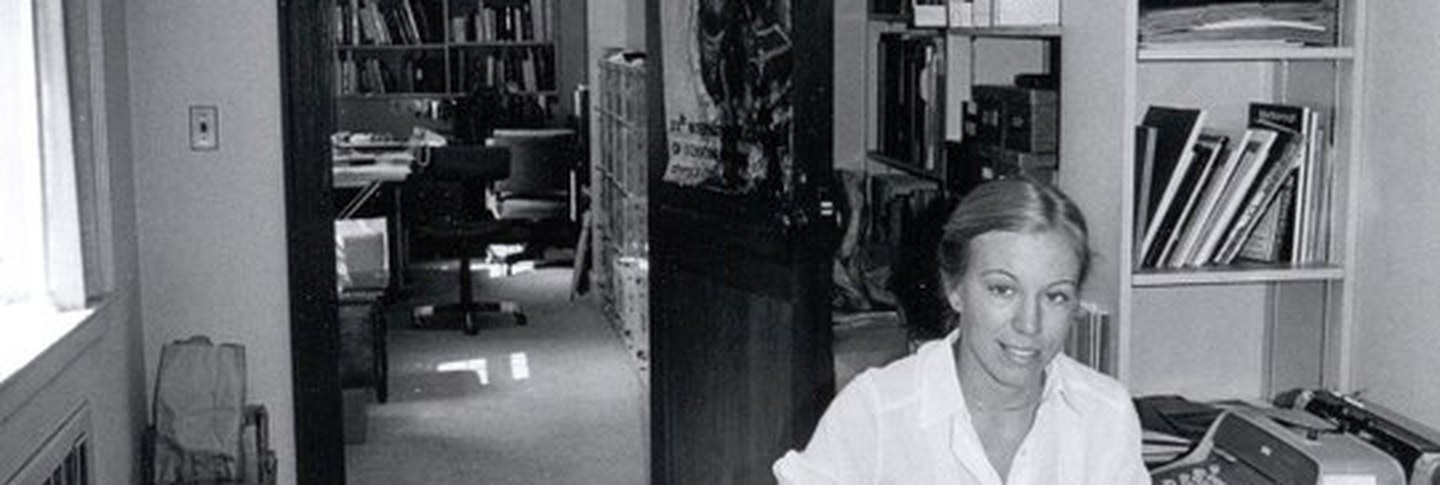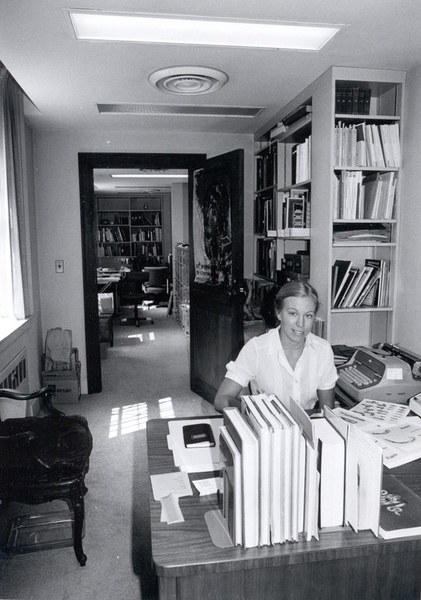The increasing complexity of Dumbarton Oaks as an institution has necessitated a concomitant increase in the size of the staff over the past seventy-five years. The staff has grown from under fifty in the first decade to over one hundred today. Before the construction of the new library, which was completed in 2005, former director Edward Keenan remarked that the books occupied the spaces where the people should be and vice versa—books were kept on the sunny third floor while many staff had their offices underground in the basement. The opening of the new library in 2005 and the removal of books, librarian offices, and fellows research areas from the Main House to the library allowed for an integration of staff offices across departments as well as new dedicated areas for the staff of the finance, human resources, museum, facilities, and gardens departments.
The Director’s Office
The first two directors of Dumbarton Oaks, John S. Thacher and William R. Tyler, had their offices in the Study, which had formerly served as the Bliss residential library. Their administrative assistants had their offices in the Oval Room. This was a particularly convenient arrangement, as the two offices connected via a “secret passage” behind a fake bookcase in the Oval Room.
Giles Constable, who was director between 1977 and 1984, moved his office into the space that originally had been the Blisses’ residential dining room and which had been retrofitted in the institutional period with wall-to-wall bookshelves. Simultaneously, the adjoining butler’s pantry was reconfigured as an administrative office and the nearby kitchen storage room became the office of the assistant director, Judy Siggins. This arrangement has been maintained ever since.






Offices of the Directors of Studies
As of 2015, the offices of the directors of the three studies programs at Dumbarton Oaks are all in the library, where they are near to the offices of the Fellows. Previously, however, the directors of studies’ offices were located in their respective “wings”: the director of Byzantine Studies in the Main House, the director of Pre-Columbian Studies in the basement of the Pre-Columbian Gallery, and the director of Garden and Landscape Studies adjacent to the Rare Book Room. Ernst Kitzinger, director of Byzantine Studies between 1955 and 1966, perhaps had the most elegant office, the paneled room on the second floor of the Main House that formerly had been used as an office for Robert Woods Bliss’s secretary during the residential period.
The original office of the curator and later director of Pre-Columbian Studies was designed by Philip Johnson and conceived, predictably, as a minimalist space made aesthetically interesting by the incorporation of Pre-Columbian artworks.


Library Offices
The staff of the three studies programs’ libraries also moved their offices from their respective “wings” in 2005 to the new library. The Byzantine library offices became the suite of offices for the Finance department; the Pre-Columbian library spaces were reconfigured for the collections of Byzantine coins and seals; and those of the Garden and Landscape library became storage areas for the rare book collections.



Fellows’ Offices
When the first fellows arrived at Dumbarton Oaks in 1941, they worked at tables situated between book stacks on the mezzanine of the new library wing. Within a year, however, this space proved insufficient both for book capacity and people, and a Byzantine Reading Room was created from two bedrooms on the second floor of the Main House. This is where most Byzantine fellows undertook their research until 2005, when individual offices were made available to fellows in the new library. Similarly, Pre-Columbian and Garden and Landscape fellows moved from carrels and tables to private offices in the library.




